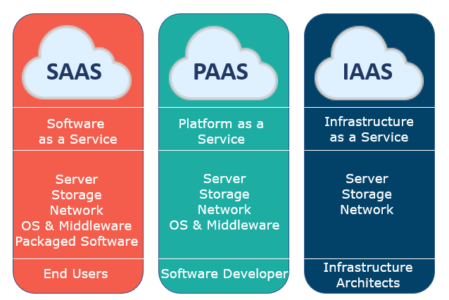Achieve Seamless Scalability With Cloud Services
In the ever-evolving landscape of cloud services, achieving seamless scalability stands as a keystone for modern companies seeking to remain versatile and competitive. The mission for seamless scalability with cloud services unveils a globe of opportunities for those prepared to welcome the transformative power of dynamic resource administration.
Benefits of Cloud Scalability
Cloud scalability uses companies the flexibility to dynamically change sources based on demand, making certain ideal performance and price performance. One vital advantage is the ability to scale resources up or down rapidly in reaction to varying workloads. This dexterity allows companies to meet altering client needs without over-provisioning resources, ultimately resulting in cost savings. Scalability also improves efficiency by making certain that systems can handle raised traffic or workload without experiencing downtime or downturns. By effectively alloting resources, companies can preserve high levels of performance during peak times without unneeded expenses during quieter durations. In addition, cloud scalability advertises advancement and testing by allowing services to easily examine brand-new ideas and scale them as needed. This flexibility motivates a culture of continual improvement and adaptation, making it possible for companies to stay competitive in a swiftly progressing market landscape. Ultimately, the benefits of cloud scalability prolong past expense financial savings to include enhanced efficiency, dexterity, and development.
Secret Functions for Scaling
Effective scaling in cloud services counts on vital functions that allow companies to change sources dynamically based upon demand. One crucial feature for scaling is flexibility, permitting resources to scale up or down in action to changing workloads. This makes sure that companies can meet performance requirements without over-provisioning sources. An additional vital function is scalability, enabling systems to deal with boosted workload by including sources effortlessly. This feature is crucial for accommodating growth without compromising performance. Additionally, automation plays a crucial role in scaling by automating the provisioning and de-provisioning of resources based on predefined policies. Automation reduces human treatment, improves performance, and guarantees quick action to changing needs. Surveillance and analytics devices are likewise necessary for scaling, giving understandings right into resource usage, efficiency metrics, and potential traffic jams. These tools allow organizations to enhance and make enlightened decisions resource allotment for efficient scaling. On the whole, these vital functions jointly equip organizations to attain smooth scalability in cloud solutions.
Implementing Auto-Scaling Strategies
To effectively maximize resource allotment and adjust to differing work, companies need to strategically implement auto-scaling methods in their cloud services infrastructure. Auto-scaling allows systems to automatically adjust the number of calculate resources based on real-time need. There are different auto-scaling techniques that companies can use, such as predictive scaling, which utilizes historical data to anticipate future resource needs, and responsive their explanation scaling, which reacts over at this website to present work adjustments.

Best Practices for Scalability
For organizations aiming to enhance their scalability in cloud solutions, implementing finest practices is important for optimum performance and resource administration. One key finest method is creating applications with a microservices style. This technique breaks down applications into smaller sized, independent solutions that can be released, upgraded, and scaled separately, allowing for higher flexibility and scalability.
Another essential method is using containerization technology, such as Docker or Kubernetes. Containers allow the product packaging of applications and their reliances into isolated units, making it easier to scale parts separately and release them constantly throughout various atmospheres.
Additionally, implementing automated implementation and infrastructure as code (IaC) can enhance scalability efforts (linkdaddy cloud services). Automation devices like Terraform or Ansible help in provisioning and taking care of sources effectively, minimizing hands-on mistakes and enabling fast scalability
Furthermore, keeping track of efficiency metrics, establishing notifies, and carrying out regular ability planning are vital methods to ensure positive scalability management. By adhering to these finest methods, organizations can achieve smooth scalability in their cloud services while optimizing performance and resource usage.
Monitoring Efficiency Metrics
When analyzing the performance of cloud services scalability, very closely keeping an eye on performance metrics is crucial for making sure optimal capability and source appropriation. By continually tracking key efficiency indicators (KPIs) such as reaction times, source, throughput, and latency application, companies can acquire beneficial insights into the health and wellness and effectiveness of their cloud facilities. Keeping an eye on performance metrics enables the early discovery of prospective traffic jams or concerns that might impact scalability, making it possible for aggressive actions to be required to resolve them prior to they escalate.

Conclusion
Finally, achieving smooth scalability with cloud services is vital for companies to optimize efficiency, improve innovation, and keep high performance levels during peak times. By my response leveraging the benefits of cloud scalability, applying auto-scaling methods, utilizing key functions such as elasticity and automation, and following ideal practices like application design and efficiency monitoring, businesses can effectively scale their systems while making best use of source application and efficiency.
The quest for seamless scalability with cloud services reveals a world of possibilities for those ready to accept the transformative power of dynamic source monitoring.
Cloud scalability supplies companies the versatility to dynamically adjust sources based on need, guaranteeing optimal performance and cost effectiveness. An additional key function is scalability, making it possible for systems to handle enhanced work by adding sources perfectly.For companies intending to improve their scalability in cloud solutions, carrying out finest techniques is essential for optimal performance and source monitoring.When examining the performance of cloud solutions scalability, carefully keeping track of performance metrics is essential for ensuring ideal performance and resource allowance.